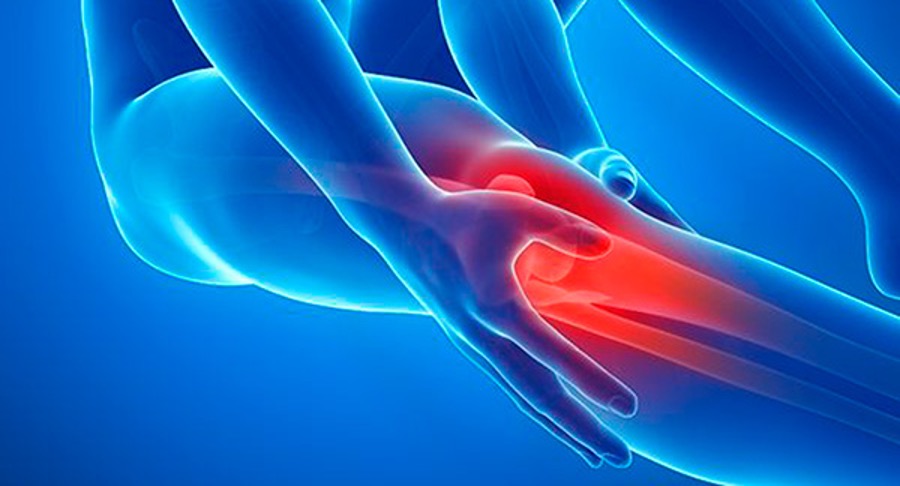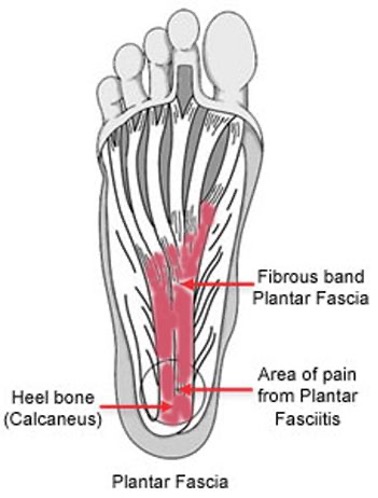Hands up whose new year’s resolution was to get fit? Many of us launch into new exercise routines at this time of year without preparing properly or building up slowly. This can be particularly risky if you’ve not been exercising much up until you made this resolution as you are likely to have poor lower limb mechanics and/or a weak core, which make you susceptible to injury. One of the most common new year running regime injuries is Patellofemoral Pain Syndrome (PFPS).
What is Patellofemoral Pain Syndrome?
PFPS is an umbrella term for pain in and around the patella (kneecap). It is sometimes called “runner’s knee” or “jumper’s knee” because it is common in people who run or play sports, but it can affect anyone.
PFPS is most commonly caused by vigorous overuse of the knee, and jogging, squatting, even climbing stairs can be culprits. Suddenly changing or increasing the amount of physical activity you do can also put excess stress on the knee, leading to PFPS, as can using inappropriate equipment or footwear. PFPS can also be caused by incorrect alignment of the patella.
If you’re experiencing PFPS, you’re likely to have pain in your knee that gets worse when you sit, climb stairs, run or squat. The pain can be felt anywhere around the knee.
What can you do about PFPS?
If you’re experiencing pain in your knee that you think could be PFPS, stop doing the activities that are causing you pain until you feel better. This might mean switching to low impact exercise for a while. Use the POLICE method:
Protect – avoid making the painful knee worse by stopping the activity you are doing
Optimal Loading – keep moving the joint as pain allows (don’t become a couch potato!)
Ice – use cold packs for 20 minutes, two to three times per day
Compression – a knee bandage can help prevent swelling (your physio can advise on the best one)
Elevate – whenever you can, rest with your knee supported in a position higher than your heart
See your physiotherapist to check the severity and type of the injury and see what needs to be done to help you recover.
How can a physiotherapist help with Patellofemoral Pain Syndrome?
Your physio will examine you to determine exactly what is causing the pain and where the specific problem lies. As there are a number of tendons and muscles in this area that could be affected, you need to know exactly what the problem is before it can be addressed.
Depending on the nature of your problem, there are a range of exercises that your physio might suggest to help strengthen and stabilise the area, as well as helping you regain movement. Manual therapy and massage may also help reduce pain and recover motion.
Your physio will be able to advise as to whether you need any bandages, taping or support equipment, and which ones are right for you. They will also advise on whether you’re wearing the right shoes, using the right equipment and following the best training regime to reduce the likelihood of the problem coming back.
What can you do to prevent PFPS?
If you think you might be at risk from Patellofemoral Pain Syndrome, the best things you can do to reduce your chances of injury are:
- Introduce a new training regime or a change in activity slowly – get physiotherapist advice on putting your activity plan in place
- Get expert guidance to make sure your footwear is appropriate and supportive, and that you’re using any equipment correctly
- Maintain a healthy weight to avoid putting excess strain on your knees
- Warm up thoroughly before exercising
- Stretch your quads and hamstrings before and after exercise
- Don’t push yourself – if you’re exercising and your knee (or anything else for that matter) begins to hurt, stop, and get on the phone to us!
If your new year’s resolution is to get more active, let us help you plan a training regime that is sustainable – rather than one that will have to be called off after five weeks when you’ve damaged something! Give us a call on (08) 9203 7771, email info@ngp.net.au or book an appointment so we can set you on a course for long-term success.
References
- 2021. Patellofemoral Pain Syndrome [Online] Available from: https://www.physio-pedia.com/Patellofemoral_Pain_Syndrome
OrthoInfo. 2020. Patellofemoral Pain Syndrome [Online] Available from: https://orthoinfo.aaos.org/en/diseases–conditions/patellofemoral-pain-syndrome/




